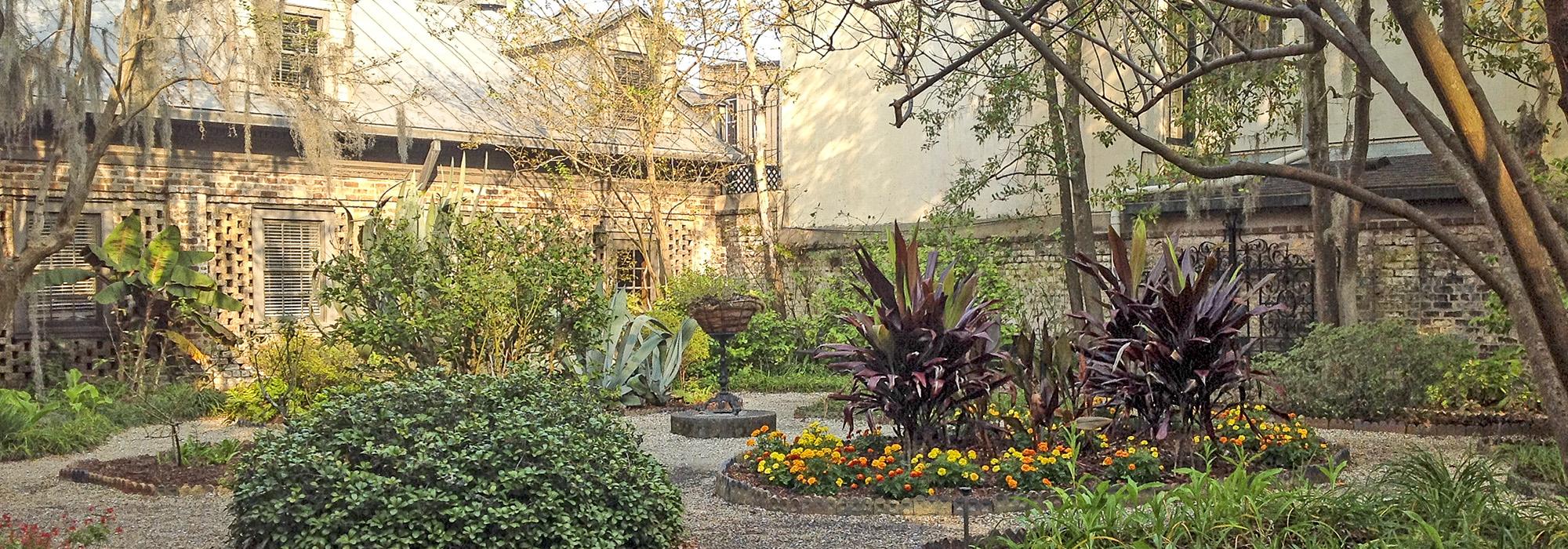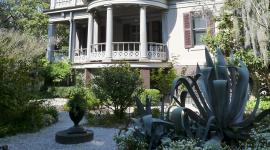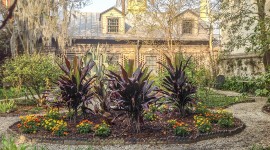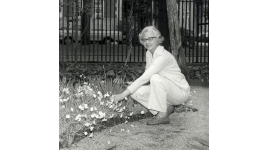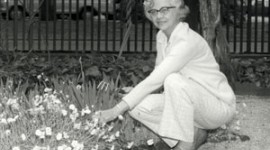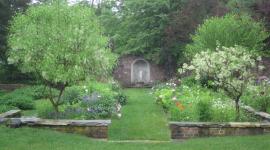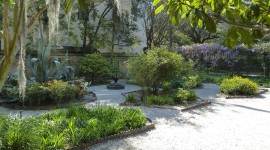Girl Scouts USA Destroys Its Clermont Lee-Designed Garden
On February 21, a groundbreaking ceremony was held at the Juliette Gordon Low Birthplace in Savannah, Georgia, to kick off an eight-month renovation of the historic house and grounds. Speaking from behind a podium that stood in what, until recently, had been the Colonial Revival parterre garden designed by pioneering landscape architect Clermont Lee, Sylvia Acevedo, the CEO of Girl Scouts of the USA (GSUSA), called the event “a new beginning of sharing the legacy of Juliette Gordon Low with even more girls and visitors.” As the news camera panned from the speaker to the audience, it became clear that the garden had been razed. Pointing to an archaeological excavation opened in a small section of the former garden space, Acevedo cited “a rare opportunity to dig in Juliette Gordon Low’s garden.”
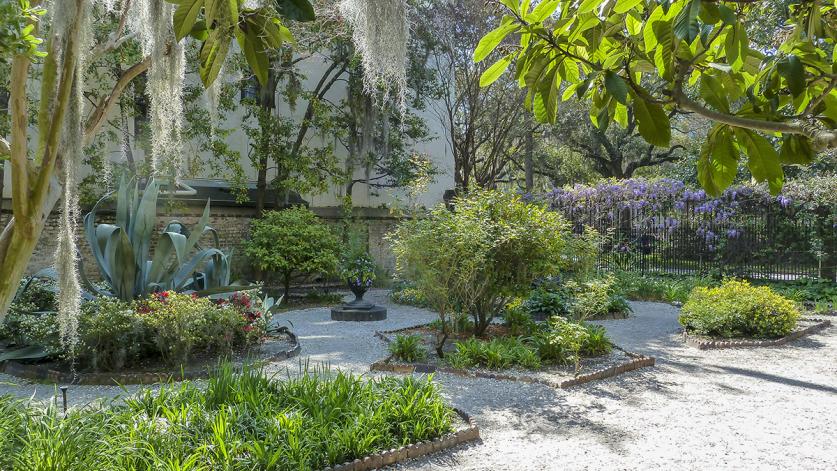
The GSUSA announced in 2016 that it would renovate the garden, in part to provide an outdoor gathering and events space and to bring the garden into compliance with the Americans with Disabilities Act. In October 2018, TCLF released three concepts for rehabilitating the garden, which offered ways to maintain the integrity of the historic design while addressing programmatic and safety concerns. Commissioned by TCLF with support from descendants of Girl Scouts founder Juliette Gordon Low, the schematic rehabilitation plans were developed by the Atlanta-based landscape architecture firm Tunnell and Tunnell.
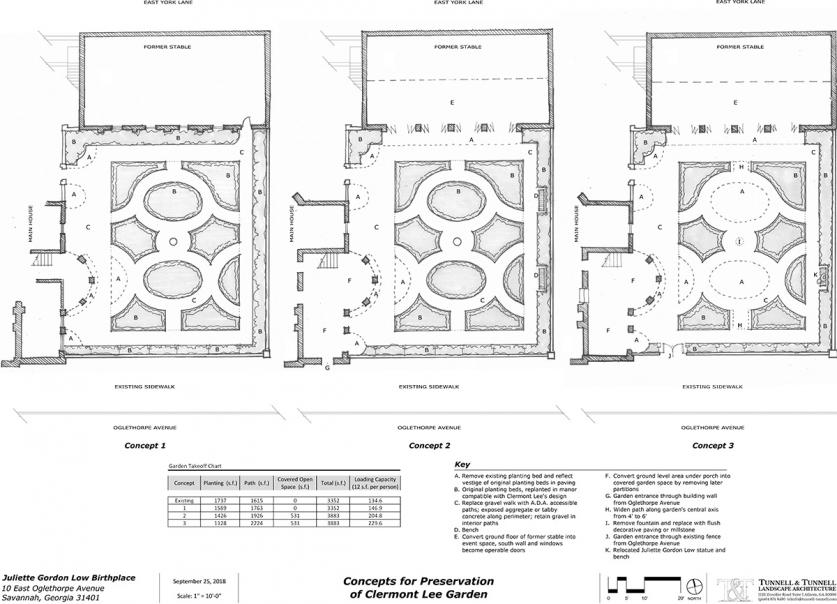
Plans for the renovation went before the Savannah Historic District Board of Review (SHDBR) on November 13, 2019, with minutes from that meeting indicating that the garden was “not a part of the review at this time” and that it would “be brought before the Board at a later time.” Appearing at the meeting was Ryan Arvay of the Historic Savannah Foundation, who noted his organization’s concern about the future of the garden, given the importance of Clermont Lee and her work. A press release issued by GSUSA two days later announced that the renovation of the Birthplace had been approved, and that “the next phase of the process is to finalize landscaping plans and the garden design.” The announcement was accompanied by drawings of a garden that closely echoed the rehabilitation plans by Tunnell and Tunnell (see Concept 3, above).
The design depicted in those plans is, however, far different from renderings shown at the recent groundbreaking ceremony. In the latter, Lee’s parterre design is completely razed and replaced with hardscape surfaces whose paving patterns partially echo portions of the former garden beds. The plans would not only fail to rehabilitate a garden that is likely eligible for listing in the National Register of Historic Places, they would significantly alter the streetscape as experienced from Oglethorpe Avenue, which runs along the property’s southern border, the whole of which is located within the Downtown Savannah Historic District. The plans are set to go before the SHDBR at a meeting on March 11, 2020.
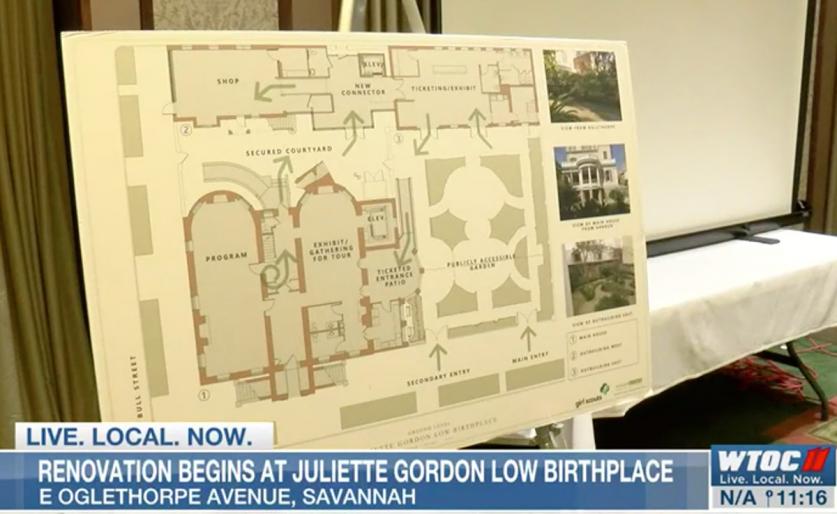
Ironically, one week before the groundbreaking ceremony, Clermont Lee was recognized by the Savannah College of Art and Design as a ‘Woman of Vision,’ an honor that highlights “strong women leaders and their influence on society.” Her five-foot-tall gold relief portrait will thus hang inside the college’s Arnold Hall alongside the previous fifteen honorees, among whom are Juliette Gordon Low. Although Lee will forever be enshrined as “one of the first women to lead a landscape architecture practice in Georgia” and “the foremost expert in re-creating historic landscapes in mid-20th-century Savannah,” it remains to be seen whether her work at the Juliette Gordon Low Birthplace will be duly recognized.
Lee’s involvement with the Birthplace began in the 1950s, shortly after GSUSA purchased the home, and lasted for more than 40 years, the longest professional relationship of her career. A Savannah native who spent most of her working life in the city, Lee (1914-2006) was among the earliest women to practice landscape architecture professionally in Georgia and was reportedly the first professional practitioner (male or female) in Savannah. Her design for the Birthplace, a parterre garden comprising intricate geometric shapes, was an important work in her career canon, which also included the renovation of five of Savannah’s historic squares.

The Clermont Lee-designed garden at the Juliette Gordon Low Birthplace has been included in TCLF’s Landslide program since January 2016. It was also included on the Georgia Trust for Historic Preservation’s 2019 ‘Places in Peril’ list, issued on November 7, 2018, having been nominated by TCLF.
Mark C. McDonald, president and CEO of the Georgia Trust, had this to say about the recent actions by GSUSA:
The Georgia Trust is disappointed that plans for the potential destruction of the Clermont Lee garden appear to be moving forward. We would have thought the Girl Scouts of America, as a nonprofit organization dedicated to the development of young women, would be interested in preserving an important work by Georgia’s first woman landscape architect. The Trust hopes they will change their course of action.
The Juliette Gordon Low Birthplace was designated a National Historic Landmark—the first in Savannah—in 1965. Unfortunately, the designation was never updated to include the work of Savannah’s pioneering woman landscape architect, Clermont Lee.
How you can help
The garden will be the subject of a hearing before the Savannah Historic District Board of Review on Wednesday, March 11. Letters concerning this review should be sent via e-mail by 5:00pm (EST) on Tuesday, March 10, to Leah Michalak of the Metropolitan Planning Commission: michalakl@thempc.org.



